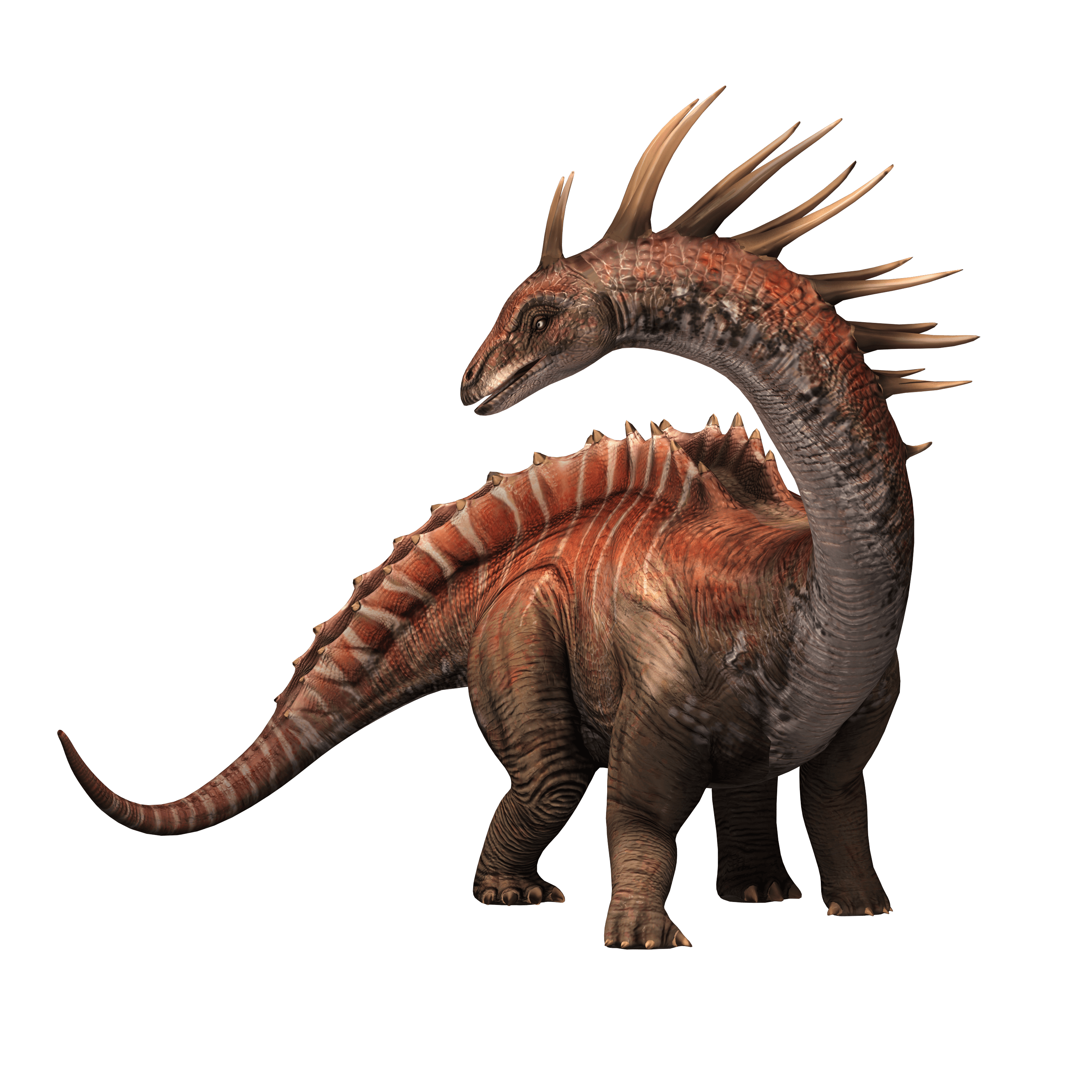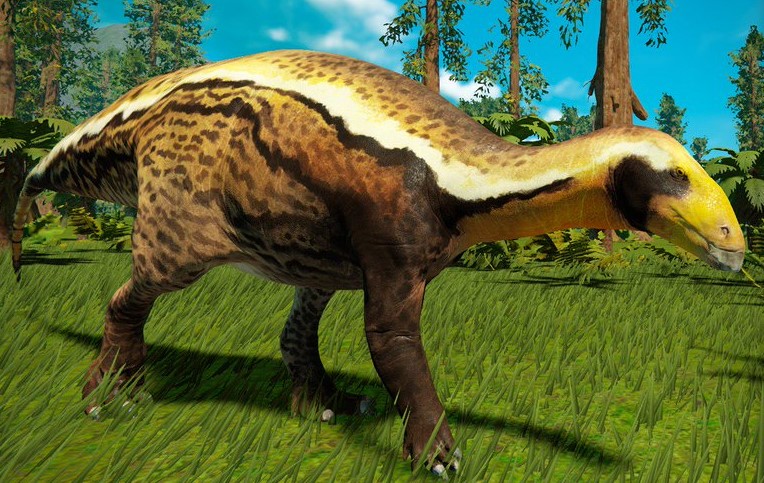


Contrary to popular assertions, the dinosaur is not named after the Alamo in San Antonio, Texas, or the battle that was fought there.

Smithsonian paleontologist Gilmore originally described the holotype, USNM 10486, a left scapula (shoulder bone), and the paratype USNM 10487, a right ischium ( pelvic bone) in 1922, naming the type species Alamosaurus sanjuanensis. Restored Alamosaurus skeletal mount at the Perot Museum. Three articulated caudal vertebrae were collected above Hams Fork, and are housed at the Museum of Paleontology, University of California, Berkeley. Undescribed titanosaur fossils closely associated with Alamosaurus have been found in the Evanston Formation in Wyoming. Bones have also been recovered from other Maastrichtian formations, like the North Horn Formation of Utah and the Black Peaks, El Picacho and Javelina Formations of Texas. The holotype was discovered in June 1921 by Charles Whitney Gilmore, John Bernard Reeside and Charles Hazelius Sternberg at the Barrel Springs Arroyo in the Naashoibito Member of the Ojo Alamo Formation (or Kirtland Formation under a different definition) of New Mexico which was deposited during the Maastrichtian stage of the Late Cretaceous Period. Īlamosaurus quarry in 2013 compared with 1937, North Horn Formation, North Horn Mountain.Īlamosaurus remains have been discovered throughout the southwestern United States. In 2020 Molina-Perez and Larramendi estimated the size of the largest individual at 26 meters (85.3 ft) and 38 tonnes (42 short tons). Paul estimated the (SMP VP−1625) specimen at 27 tonnes (30 short tons), and he also mentioned a large partial anterior caudal vertebra which suggests an Alamosaurus specimen that is 15 percent dimensionally larger with similar mass to his Dreadnoughtus estimation of 31 tonnes (34 short tons). However, he says that at the moment, scientists do not know whether the massive tibia belongs to an Alamosaurus or a completely new species of sauropod. It is currently the only titanosaur from North America. Scott Hartman estimates Alamosaurus, based on a huge incomplete tibia that probably refers to it, being slightly shorter at 28–30 m (92–98 ft) and equal in weight to other massive titanosaurs such as Argentinosaurus and Puertasaurus. Though most of the complete remains come from juvenile or small adult specimens, three fragmentary specimens, SMP VP−1625, SMP VP−1850 and SMP VP−2104, suggest that adult Alamosaurus could have grown to enormous sizes comparable to the largest known dinosaurs like Argentinosaurus, which has been estimated to weigh 73 metric tons (80 short tons). In 2012 Thomas Holtz gave a total length of 30 meters (98 ft) or more and an approximate weight of 72.5–80 tonnes (80–88 short tons) or more. Its body was at least partly covered in bony armor. Size comparison, showing the scale of three Alamosaurus specimens.Īlamosaurus was a gigantic quadrupedal herbivore with a long neck and tail and relatively long limbs.


 0 kommentar(er)
0 kommentar(er)
